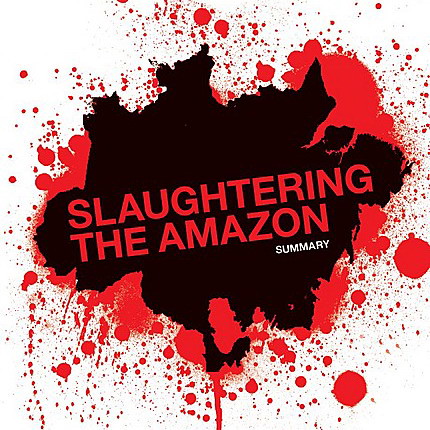
In a series of major reports, Greenpeace is explaining to the world that beef production is the main driver of deforestation in Amazônia. Earlier this year, it issued a report showing that nearly 80 percent of land deforested in the Amazon from 1996-2006 is now used for cattle pasture.
The most recent report, Slaughtering the Amazon, charges that major international companies are unwittingly driving the deforestation of the Amazon rainforest through their purchases of leather, beef and other products supplied from the Brazil cattle industry. Greenpeace found that Brazilian beef companies are important suppliers of raw materials used by leading global brands, including Adidas/Reebok, Nike, Carrefour, Eurostar, Unilever, Johnson & Johnson, Toyota, Honda, Gucci, Louis Vuitton, Prada, IKEA, Kraft, Tesco and Wal-Mart, among others.
Clearly, the intention is to sensitize major global consumers and the corporations that manufacture and deliver beef-related products to bring pressure for real operative conservation practices in Brazil. A few years ago a campaign targeting soybean production resulted in an industry-led soy moratorium on planting in illegally logged areas of the Brazilian Amazon. Similarly, consumer consciousness may be able to reduce the linkage between ranching and future illegal deforestation. As with the soy campaign the hope is that eco-sensitive public opinion in the marketplace -- as in the EU -- might become a wedge toward better practices on the ground.
The global market is capable of delivering carrots as well as sticks. Recently, emerging global climate policies such as REDD have been offering the possibilities of new market incentives. Already they seem to be producing something of a rapprochement between antagonists like Minister of Environment Carlos Minc and Soy King and Mato Grosso Governor Blairo Maggi who recently agreed to new policies intended to guide landowners into a new era of protecting the environment in exchange for payments for ecosystem services.
There are, of course, many doubts concerning the details and distrust of market mechanics. But, also, there are high profile campaigns by world leaders -- such as Prince Charles and Wangari Maathai -- and cautious support from many large environmental groups for payments for avoided deforestation. At this early point, the new carbon economy is full of contradictions and Greenpeace and several other environmental groups remain highly skeptical of using carbon offsets for avoided deforestation.
It's definitely not going to be easy to birth a new era of harmony between conservation and development policies, either for the global economy or for Amazônia where the Brazilian Ministry of Environment has often been sabotaged in Congress or on the ground by the more powerful constituencies of the ministries of Agriculture, Energy and Transportation. Indeed, Minister Minc is already facing many of the obstacles that drove his predecessor Marina Silva to her resignation.
As politics and personalities and promises grab the headlines it is important keep in view the pictures of what is happening on the ground where we citizens of Planet Earth -- in Brazil and in the world -- may be losing the future of the Amazon forest.
Photos of Mato Grosso and Para by Leonardo F. Freitas.
*********
More Information -- The Guardian UK has an excellent series on the latest Greenpeace Report:
Amazon rainforests pay the price as demand for beef soars
Supermarkets accused over destruction of rainforest
How our appetite for beef is felling the Amazon






No comments:
Post a Comment